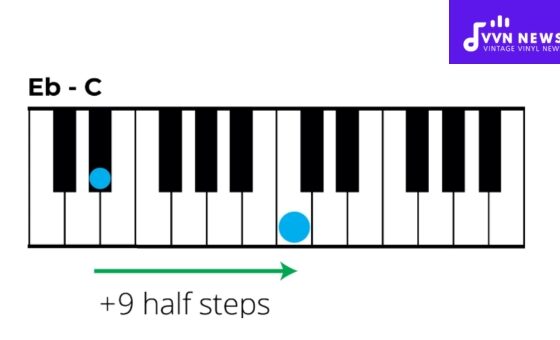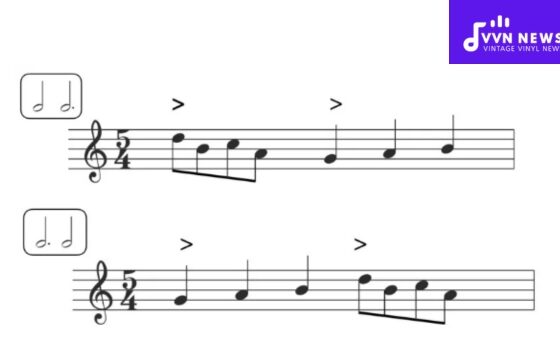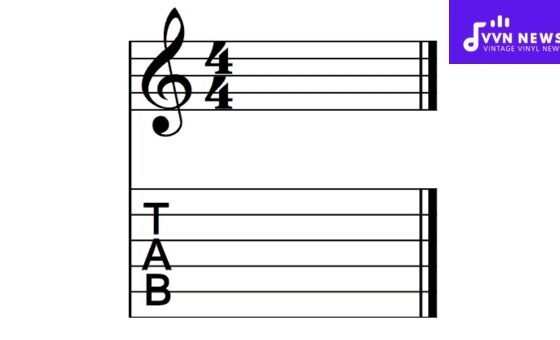Writing my songs is a unique and incomparable gratification as a music lover.
It’s like painting on an infinite canvas where each color represents a different note or rhythm, each brush stroke shifting the mood and meaning.
Songwriting truly is an art, but like any art, it is skill-laden with techniques and methods just waiting to be honed.
Whether you’ve experimented with composition before or are just picking up your first instrument, these 35 songwriting tips for getting started are a fantastic way to dip your toes into this captivating world.
There’s something intrinsically human about the need to create music—to take solitary thoughts and feelings and weave them into a tapestry of notes that resonate with others on separate paths of life.
I firmly believe that anyone has the potential to create beautiful music if they’re willing to put in the time and effort – all you need is patience, dedication, and a little guidance.
So, keep reading if you’re ready to take those melodies swirling in your head into the audial world for all to hear.
35 Songwriting Tips for Getting Started

Learning to write compelling songs is like embarking on a journey of self-discovery and expanding your musical capacity.
There are countless pathways you can take and numerous techniques to explore.
To help you kick off this adventure, I’ve provided 35 songwriting tips for getting started – pieces of wisdom collected along my musical journey.
Whether you’re a curious beginner or an experienced musician expanding your skills, these tips will offer vital insights into songwriting’s intricate, magical world.
Start with a catchy hook or melody.
While crafting a song, beginning with an engaging hook or melody is often helpful.
This could be a lyrical phrase that strikes you or a compelling chord progression that gets you humming along.
The key here is to craft something that instantly grabs attention and sticks in the listener’s mind long after they’ve heard your song.
Remember, this hook will serve as the backbone of your composition, setting the tone and pace for everything else to follow.
The power of a strong melody cannot be undermined – it’s like using a bold font or highlighting in the text – drawing in listeners and evoking emotions even before they process the lyrics.
Experiment with different song structures.
A common mistake many beginners make is clinging tightly to familiar structures, afraid to break the mold.
I encourage you to understand essential systems like ‘Verse-Chorus-Verse’ and explore lesser-used ones such as ‘AAA’ (where every verse is similar) or even entirely non-standard formats based on each song’s unique message.
Structures are vital as they provide shape, predictability, and coherence – much like chapters, headings, and bullet lists do in articles.
However, they shouldn’t confine creativity but should serve as guidelines adaptable according to the essence of each song.
Also Read: 27 Best Bass Songs [Experience The Deepest Grooves Of Music]
Use descriptive and vivid lyrics.
Paying attention to lyrical detail is crucial. Including vivid imagery paints a mental picture and anchors your song in the hearts of listeners, especially when it resonates with their own experiences or stirs up their imagination.
Try to evoke emotions through powerful, tangible descriptions and visual metaphors — whether writing about heartbreak, social issues, joy, or simply narrating a story.
One technique is to leverage sensory detail (sight, sound, smell, touch, and taste) throughout your songs.
Instead of saying, “I feel sad,” try to show that sadness — “Clouds hang heavy in the dreary skies mirroring my melancholic eyes.”
This gives your audience a more immersive experience, making listeners connect on a deeper level with your music.
Write from personal experiences.
Writing from personal experience can be an enlightenment. After all, the richness of life comes from our emotions and stories.
If you’ve been through something remarkable or even ordinary yet potent enough to leave an indelible mark on your heart — whether it’s a relationship, travel experience, or awakening — there are melodies within those memories waiting to be discovered.
By tapping into these emotions and experiences that shaped your journey, you’ll unearth ideas for heartfelt lyrics unique to you.
Be aware, though! Balance the specificity of personal details with universality, allowing listeners to relate to themselves.
Authenticity is paramount in making these profoundly intimate compositions resonate universally.
Collaborate with other songwriters.
Collaboration often opens avenues for learning and creativity waiting just over one’s horizon.
Working alongside other songwriters gives you new perspectives on familiar topics, unearths fresh writing approaches, fosters idea exchange, and teaches you ways of handling creative differences — a vital skill for success in this field.
Make an effort to network within your genre and across varying styles because versatility and adaptability are the bread and butter of any songwriter’s toolkit.
Websites like SongwriterLink or Meetup can help you connect with fellow songwriters.
Keep a songwriting journal.
Keeping a songwriting journal is essentially building your creative vault. It could be a traditional pen-and-paper notebook, a voice recording app, or even software like Evernote or Trello — the onus is to have something at hand whenever inspiration strikes.
In this journal, jot down random lyric ideas, chord progressions, melodies humming in your head, or even emotions swirling within you at any moment.
Go one step further and note unusual turns of phrases caught in conversations, quotes from books, vivid dream imageries, experiences that made you feel deeply – anything that engendered an emotional response. Nothing’s too trivial for this arsenal of inspiration!
With time, as your ideas intermingle within these pages/screens/recordings, they’ll breed fresh insights and potentially seeds for new songs — making it an indispensable tool for any budding songwriter.
Also Read: 25 Best Funeral Songs [Paying Tribute With A Heartfelt Melody]
Edit and Revise Your Lyrics
Once you’ve laid down the skeletal structure of your song – the initial idea, the chords, the catchy hook – you’re faced with the task of bringing life to it with lyrics.
But writing lyrics isn’t just about one spark of inspiration. It’s continuous honing and refining, like painstakingly chiseling a sculpture until it embodies perfection. Editing and revising your lyrics is as important as creating them.
Whether it’s replacing a clichéd phrase with something original, aligning your rhythm more snuggly into your melody, or ensuring each line serves the song’s overall theme – editing is about precision and persistence.
It’s about recognizing that songwriting is a craft that takes time and patience to perfect.
The key lies in learning to step back from your work, give it some breathing space, and then return with fresh eyes ready to prune and polish.
Use Metaphors and Similes
Intriguing lyrics often derive their charm from metaphors and similes. These literary devices can add flavor to your words and paint vivid mental pictures for listeners.
Consider lines like “You’re a shooting star I see / A vision of ecstasy” from Rihanna’s ‘Diamonds’ or “Life is a highway / I wanna ride it all night long” from Tom Cochrane’s song – they linger in memory because they conjure vibrant visuals.
Metaphors compare without using “like” or “as,” while similes draw comparisons using these words.
They can turn ordinary ideas into extraordinary lyrical beauties – making audiences feel the music beyond just hearing it.
Write About Universal Themes
When selecting themes for your songs, consider what resonates universally. Grief, love, hope, and loss – these feelings touch every heart at some point, regardless of class, race, or geographical location.
Utilizing universal themes can make your songs more accessible and relatable to various listeners.
Additionally, there’s something incredibly moving about using your unique voice and perspective to explore these common threads of human experience.
Also Read: 30 Best Songs About Fire [Feel The Heat With These Hot Tracks]
Practice Writing Regularly
Like any skill or form of art, songwriting also benefits from regular practice.
The more you train your mind to think in musical phrases, the easier it becomes to construct songs instinctively.
Devote time regularly, if not daily, to jot down lyrical ideas or chord progressions.
Regular writing sessions condition your creativity, lowering resistance each time you try to compose.
Plus, Investing time consistently promotes growth and evolution as a songwriter.
Over time, you’ll find that your initial drafts require less editing and become more cohesive due to the habitual fine-tuning of this craft.
Study your favorite songwriters.
One of the most effective ways to hone your craft is by studying those you admire.
Immersing yourself in the works of your favorite songwriters can be a great source of inspiration and learning.
Observe the lyrical style, themes, and structure of their songs. Note how they embed emotions into their compositions or the unique ways they use wordplay and rhyming schemes.
For an interactive study experience, use platforms such as Genius (here: genius.com) that provide lyrics, artist commentary, or user interpretations.
The idea isn’t to replicate their style but to learn from it. As Pablo Picasso once said, “Good artists copy, great artists steal.”
So feel free to ‘steal‘ from those you admire, incorporating their strengths into your personalized writing process.
Play with different chord progressions.
Chord progressions offer the foundation on which melodies are built – akin to ‘skeletons’ giving ‘body’ to songs.
They provide a sense of direction and harmony and can significantly influence a song’s mood and character.
As you experiment with different progressions, you’ll discover that each elicits a distinct emotional response – major chords often sound happy, while minor ones may sound sad or mysterious.
Websites such as Hooktheory provide databases of popular chord progressions across various genres, which could serve as excellent starting points for exploration.
Find unique angles on familiar topics.
Approaching common topics from unique angles breathes fresh life into otherwise mundane subjects; it’s about finding extraordinary narratives in the ordinary—painting pictures people have seen before but with new colors—a bit like adding a distinctive twist to a classic recipe.
Consider love—a widely explored theme in music—but maybe approach it through the lens of two astronomers falling for each other while gazing at the stars.
Or, think about writing a song on heartbreak but from a pet’s perspective of losing its owner.
Explore various rhyme schemes.
Rhyme schemes add rhythm and musicality to songs, making them more memorable for listeners.
Commonly used ones include alternate rhyme (ABAB) and coupled rhyme (AABB).
However, don’t limit yourself – explore more complex schemes like terza rima or slant rhymes – words sounding similar but not the same.
Remember that the purpose of a rhyme scheme should be to support and enhance your song’s narrative flow, not to constrain it.
There are no hard and fast rules here – only guidelines designed to improve your songwriting journey.
Also Read: 33 Best Snoop Dogg Songs [Relive The Iconic Beats Of This Legend]
Create a strong emotional connection.
Crafting a connection with your listeners is arguably one of the most crucial aspects of successful songwriting.
While it’s easy to focus solely on composing catchy melodies or clever lyrics, the magic truly happens when your song resonates with the hearts and minds of your audience.
To evoke emotion, try writing from life experiences or crafting stories that reflect universal human feelings and events such as love, loss, joy, or struggle.
By weaving emotion into your lyrics and melodies, you’ll create a bridge that allows listeners to relate and connect on a deeper level.
Break down your song’s message.
Before getting lost in chord progressions and lush metaphors, take a moment to clearly define what message you wish to convey through your song.
Write this down in a plain language statement – be it about love gained/lost, human resilience, or the beauty of nature.
Your song’s message serves as its compass, ensuring every lyric choice or musical configuration aligns with the theme.
Refining your song’s purpose early on and revisiting it throughout the process improves creative focus and song coherence while ensuring your audience understands and appreciates what you’re trying to communicate.
Use imagery to paint a picture.
Akin to painting or photography, great songs create vivid imagery in listeners’ minds using words instead of brush strokes or pixels.
Masterful lyricists are adept at multisensory portrayals, transforming abstract ideas into tangible scenarios that elicit emotions or memories in their audience.
For example: “His eyes were icy blue winters – cold yet beautiful” paints an intricate picture than merely saying, “He had blue eyes.”
Take time to develop this talent – leaning on personal experiences for richer detail and more genuine depiction – watching as imagery breathes life into your songs.
Try writing in different genres.
Lastly, push outside of your comfort zone by exploring other genres outside what you naturally gravitate towards.
Each genre has its conventions – rhythm patterns, instrumentation, song structures, lyrics, and themes that define it.
Experimenting across genres enables growth as a songwriter – better understanding these individual elements and how they change the feel of a song.
Plus, this curiosity might lead to creating innovative fusion pieces combining the best features from various genres!
Let your musical journey be one of exploration and courage – always seeking improvement and expansion.
Unveil the fullness your creativity can offer, from penning soft folky tales to adrenaline-pumped rock anthems.
Use technology for recording ideas.
Technology can be an ally in your songwriting journey in our digital era. I prefer to keep a digital notebook on my phone where I jot down spur-of-the-moment lyric ideas, phrases I overhear in conversations, or even a melody that comes to me at the grocery store.
With countless apps available, you can easily find one that best suits you.
For instance:
- Evernote: This is a great note-taking app where you can jot down lyrics and even attach voice memos if a particular melody strikes.
- Voice recorder apps are perfect for humming a melody before you forget it. When inspiration strikes unexpectedly, having an easy-to-use voice recorder at your fingertips is invaluable.
Remember to back up these ideas regularly to ensure they’re safe and accessible whenever creativity strikes.
Also Read: 30 Best Father And Daughter Dance Songs [Memorable Moments]
Write about your dreams and aspirations.
Songs often become anchors in our lives because they resonate with shared human experiences and aspirations.
Writing about your dreams and aspirations can create an intimate bond with the audience as listeners find reflections of their dreams within your narrative.
Plans can range from specific goals or vague yearnings to big concepts or simple everyday joys—so go ahead, dig deep into your ambitions and desires, and interpret them creatively into heartfelt lyrics!
Embrace vulnerability in your lyrics.
Transparency is critical in successful storytelling – think of it as writing without filters.
Vulnerability may feel risky, but exposing raw emotions can create powerful connections between the songwriter and their audience.
Don’t shy away from exposing these emotions boldly through music, whether it’s joy, sadness, fear, or love.
The result often yields more profound insights into the human condition, giving listeners something authentic to connect with.
Write in different time signatures.
Experimenting with time signatures can infuse fresh life into your songwriting endeavors while broadening your musical repertoire.
Typical pop songs stick with 4/4 but don’t be afraid to mix things up. Dabble in 3/4 for a waltz-like feel, try the folk-popular 6/8, or even venture into uncharted 5/4 or 7/8 territories for an edgier vibe.
Remember, while time signatures set the rhythm of your song, like every other ‘rule’ in music, they’re meant to be experimented with!
Experiment with Tempo Changes
“Tempo” represents the pace of your song. It’s akin to the speed at which you walk or run, setting the energy and vibe of your music.
Experimenting with tempo can make your song feel animated, meditative, or anything.
Try playing your song at different tempos when you’re just starting. A fast tempo (~120-150 beats per minute) might turn a sad ballad into an upbeat pop song, while a slow tempo (~60-80 bpm) might give an energetic rock song a bluesy feel.
(Beats per minute or bpm is used to measure tempo. Some online tools can help you understand how it translates into real-time.)
Remember, subtle tempo changes throughout the song—speeding up during exciting or slowing down during emotional parts—can add dynamic excitement and depth.
Find Inspiration in Everyday Life
Believe it or not, most great songs stem from ordinary experiences.
Life is rich with moments that can be translated into compelling lyrics—every aspect, from work stress to exhilarating love, could be inspiration lurking around to be discovered.
Look at events in your life and ask questions: What emotions arise? What would this story sound like as a song?
You’d be surprised by how well these mundane situations can lend authenticity and relatability to your lyrics.
One effective method I follow is keeping an ‘Inspiration Journal.’ Whenever something motivates me—even slightly—I jot it down in this notebook.
This habit trains my brain to seek inspiration continuously, eventually making it intuitive.
Also Read: 14 Most-Streamed Songs Of All Time On Spotify [The Greatest Hits]
Observe The World Around You
Like finding inspiration in personal experiences, observing people and environments around us also offers rich song material.
Not only does keen observation provide insight into diverse perspectives, but it also fuels creativity.
Eavesdrop on conversations in cafes (don’t creep anyone out!) or people-watch at the park.
Perhaps a snippet of dialogue overheard prompts an intriguing song concept, or observing a couple’s interaction ignites the spark of a heart-wrenching love song.
“Reflection” is critical in this process—covert your observations into musical phrases. The more aware you are of the world, the more resourceful your songwriting becomes.
Use Repetition For Emphasis
Repetition serves as a powerful sonic tool in songwriting. Like how bold or italicized phrases grasp attention in text, repeated elements—whether lyrics, melodies, or rhythms—grab listeners’ ears, emphasizing essential parts.
This technique is often used in crafting memorable choruses or hooks. For beginners, try repeating your best lyrical line throughout the song.
This repetition underlines that line and provides familiarity within the song’s structure—a hook line your listeners sing along to!
Repetition is akin to adding spices while cooking—a little enhances flavor, but overuse can spoil the meal!
Build a Strong Chorus
Your chorus is the centerpiece of your song, the catchy refrain that listeners will likely remember and sing along to.
Consequently, it should embody the essence of your song’s message and emotions.
A perfect chorus holds a powerful emotional impact equivalent to the climax in movies or novels.
So, how do you build a strong chorus? First, make it memorable. This could be through catchy melodies, repeated phrases, or compelling hooks—”In My Life” by The Beatles is an excellent example.
Second, contrast it musically from your verses—liven it up by changing chords or raising the melody an octave higher.
Lastly, echo your song’s message in its choruses – like a repeating narrative theme spun to keep readers on likewise hooks used in literature.
Create Contrast in Your Verses
Contrast is paramount when writing verses. It creates variety within the song—enabling you to maintain listener interest and balance out more intense parts of your piece (like the chorus).
If you build high-energy choruses, contrast them with softer verses—lyrically unraveling background information leading up to pre-choruses or creating suspenseful buildups towards dynamic climaxes (chorus).
Remember, variety could come through changing rhythms (fast vs. slow), instruments (electric guitars vs. acoustic ones), and dynamics (loud vs. soft).
Creating contrast maintains listener engagement while navigating through your song – similar to how engaging narratives juggle tension-filled cliffhangers and satisfying resolutions.
Don’t Be Afraid To Rewrite.
Rewriting is an integral part of every creative process – akin to applying a second coat of paint, ensuring a polished look that lasts or revising drafts, eliminating redundant components, and improving coherence.
At first pass, lines might feel awkward, or lazy rhymes sneak in unintentionally.
Sometimes, the chorus doesn’t pack as much punch as you’d hoped, keeping pace along other powerful verses. In these moments, do not hesitate to rewrite your lyrics.
Distill them down to their most potent form, ensuring every word adds value, moving the song forward – reflecting the clarity of thoughts and emotions the song wishes to communicate.
Also Read: How To Transpose Music? [Simplifying Key Changes In Songs]
Keep Your Lyrics Concise.
Brevity is indeed the soul of wit, which also holds for songwriting. Over-complicating songs with lengthy lyrics could dwarf their impact.
Simplify your language, get to the point without redundancy, and make dense emotions palpable through specific imagery and simple phrasing – akin to powerful slogans capturing the essence in a few words.
Aim for concise yet expressive lyrics – as creating impactful narratives within three-minute melodies—balancing simplicity with depth—is a hallmark trait of skilled songwriters.
The poetry of words could sometimes be lost in melody unless artfully combined.
Use Wordplay and Clever Phrasing
In songwriting, words are your colors—you can weave them into intricate patterns, mimic realism, or throw them together in beautiful chaos.
Wordplay and clever phrasing allow you to express creativity and make your lyrics more engaging.
Think about double entendres, alliteration, assonance, and internal rhymes—they all add that extra pinch of ‘wow.’
They inject rhythm and musicality into your lyrics, making it easier for listeners to grasp them.
For instance, Taylor Swift’s lyrics often exhibit this charm: “Drew looks at me I” (alliteration), “And I was screaming Go go go” (assonance).
However, be careful not to get carried away with complexity—your message should remain clear and relatable to your audience.
Remember that even the cleverest of phrasings loses its purpose if it detracts from the core emotion or idea you aim to convey.
Explore Different Perspectives
As songwriters, we are storytellers—subscriptions to a universe full of perspectives.
While personal experiences often inspire our songs, it’s equally transformative when we put ourselves into someone else’s shoes—telling their story using our words.
Have you ever tried narrating an event as an observer? Or singing about an inanimate object? Or echoing society’s voice?
Each perspective breathes fresh air into what might have otherwise been cliché themes.
To illustrate this point, listen to “Fancy” by Reba McEntire. With this intense perspective switch, she narrates life as a southern girl pushed into evening work by a poverty-stricken mother.
Connect With Your Audience
Writing profound lyrics is vital, but ensuring a connection with your audience is paramount.
The purpose of crafting those thoughtful verses is to resonate with listeners—to evoke emotions or provoke thoughts.
This requires you to understand a shared human experience—those universal themes, like love, loss, ambition, and fear—that every individual relates to.
Use straightforward language encapsulating these emotions and play with various lyric-writing techniques to make the connection even more powerful.
Adele’s famous number “Hello,” its universal theme of apology and longing resonates deeply with listeners, leaving them stirred and emotionally connected.
Incorporate Storytelling Elements
Engrossing your listeners into a mini-narrative world can leave a lasting impact on them.
Here’s where the elements of storytelling become instrumental. Create characters, describe the setting vividly, play out a conflict and its resolution across your verses and choruses, or take the listener on an emotional ride in your song.
Breaking Benjamin’s “Diary of Jane” paints an enigmatic woman’s journey through their lyrics—a powerful storytelling example in songwriting.
Trust Your Instincts And Have Fun!
Ultimately, songwriting has no hard-and-fast rules—it’s a subjective art! Trust your instincts when writing.
If you believe strongly about how something should sound or feel, follow that clue—it often leads to comfortable creativity.
Most importantly, remember that songwriting should be an enjoyable process. Experiment with various themes, explore uncharted territories of melodies — and discover the joy in creation rather than focusing solely on perfection.
So go ahead – let loose and let that unique voice echo from within. Ultimately, even if your lyrics or hums touch one person along your melody—you’ve done well.
Also Read: 20 Easy Flute Songs [Beginner-Friendly Pieces To Master]
FAQs About Songwriting Tips
What is a hook, and why is it crucial in songwriting?
In songwriting, a hook is a catchy melody or lyrical phrase that grabs the listener’s attention. It’s crucial as it makes your song memorable.
How can I find inspiration for my songs?
Inspiration can come from personal experiences, dreams, observations of the world around you, or even everyday life events.
How important is structure in a song?
Song structure provides shape and coherence to your composition. While it’s essential to understand basic facilities, creativity shouldn’t be confined.
Can personal experiences influence my songwriting process?
Personal experiences often make the most potent songs as they’re genuine and easily resonate with listeners.
What role does collaboration play in songwriting?
Collaboration provides fresh perspectives and unique ideas that can enhance your work. It’s an excellent way to learn from other creatives.
Conclusion
Remember that songwriting, at its core, is about passion and personal expression.
Don’t be afraid to pour your heart into your lyrics and let your music reflect who you are.
Songwriting is a skill that requires patience, so don’t feel discouraged if your initial attempts aren’t as brilliant as you’d hoped.
View each attempt as a step closer to crafting a beautiful piece of music that resounds with others and, most importantly, fulfills you.
Lean on these 35 songwriting tips to get started—you’re now armed with the knowledge to set your creative journey in motion.








